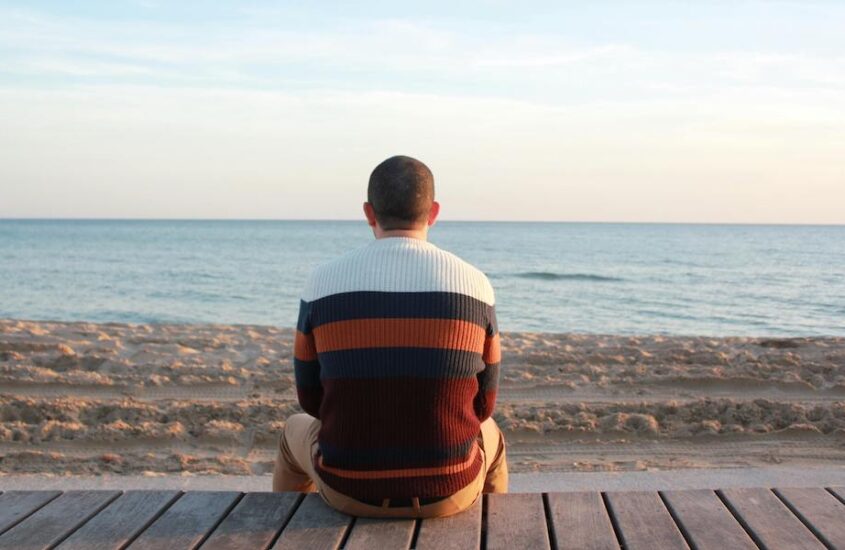How To Plan a Retreat as an Introvert

Planning a retreat as an introvert can be a rewarding yet challenging experience. For those who value solitude and peaceful settings, a well-planned retreat offers a perfect escape from the hustle and bustle of everyday life. Introverts often thrive in quiet environments where they can reconnect with their inner thoughts and recharge away from social pressures.
The idea of carving out time for a personal retreat might seem daunting at first. You may wonder how to find the right place, what to bring, or even how to spend your time effectively without feeling lonely.
However, with thoughtful planning, you can create an environment that feels safe, comfortable, and enjoyable. From selecting the ideal location to setting a comforting routine, we’ll cover all the essentials to help you plan a retreat that meets your needs.
Setting Your Retreat Goals
Before you set off on your retreat, it’s important to clarify your objectives. Are you aiming to decompress from stress, find creative inspiration, or perhaps dedicate time to a personal project? Establishing clear goals allows you to customize your retreat, making it as fulfilling and effective as possible. Think about what you need most from this time away — relaxation, a break from technology, or space to think deeply — and plan your activities accordingly.
Choose the Right Location
The success of your retreat heavily depends on its location. As an introvert, choosing a venue where you can have privacy is crucial. Search for quiet, secluded spots that limit interactions with others. Options might include a rustic cabin in the woods, a serene beachside bungalow, or a peaceful countryside cottage. Each setting offers unique features that can better your retreat, such as the soothing sounds of nature or breathtaking views, contributing to a calming environment where you can focus on your personal goals.
Timing Your Retreat
Selecting the right time for your retreat can impact your experience. Aim for off-peak seasons to avoid crowded areas and social events. This strategic timing means fewer distractions and less social pressure, allowing you to immerse fully in the tranquility of your surroundings. If possible, choose times when tourist traffic is low, ensuring that your chosen retreat spot remains as quiet and undisturbed as possible. This careful planning in timing helps to make sure your retreat provides the solitary environment you crave for rejuvenation.
Preparing for Solitude
As an introvert, the key to enjoying your retreat is effectively preparing for time alone. This preparation not only involves choosing the right location and time but also that you have the right resources to enjoy solitude. Consider packing books that can transport you to another world, journals to express your thoughts, or any other materials that aid relaxation and personal reflection.
Essential Packing Tips
Packing for your retreat should focus on comfort and personal enjoyment. Select items that evoke a sense of peace and contentment. Include soft, comfortable clothing that makes you feel at ease—think cozy sweaters or loose-fitting pants. Don’t forget your favorite tea or coffee, which can be a comforting ritual during your retreat. A warm blanket is perfect for cooler evenings or simply creating a snug nook for reading or meditating.
Setting a Daily Routine
Creating a flexible yet structured daily schedule is a must for any successful retreat. This balance helps prevent feeling overwhelmed and maximizes the benefit of your time away. Start by outlining times for activities that align with your retreat goals, like meditation in the morning, a midday hike, or evening reading. This structure provides a framework that enriches your day without rigid constraints.
Planning Your Activities
Begin with activities that fulfill and refresh you, such as meditation to center your thoughts, reading to expand your mind, or hiking to connect with nature. These should be activities that you look forward to, not chores on a to-do list. Planning these in advance ensures that you allocate enough time to each, enhancing your overall retreat experience.
Balancing Activities
It’s important to strike a balance between scheduled activities and free time. Avoid over-planning. Make room in your schedule for spontaneity—whether it’s impromptu walks, naps, or simply sitting and reflecting. This flexibility allows you to respond to your mood and the natural flow of the day. Rest and unstructured time are not only refreshing but also essential for creative insights and personal growth.
Maintaining Energy and Enthusiasm
Keep your daily routine light enough to avoid exhaustion but structured enough to prevent boredom. The aim is to return from your retreat feeling rejuvenated and energized. By the end, you should feel that you’ve had a rejuvenating break, filled with activities that recharged your spirits and gave you space to breathe.
Being One With Nature
For many introverts, nature provides a perfect backdrop for self-reflection and relaxation. When selecting your retreat location, prioritize easy access to natural environments. Whether it’s lush forests, tranquil beaches, or peaceful mountain landscapes, being close to nature can add to your retreat experience.
Choosing a Natural Location
Aim to find a retreat space that merges well with the natural world. This could mean a cabin nestled in the forest, a cottage by the sea, or a tent in the mountains. The key is proximity to nature, allowing you to step outside and immediately be in a space where you can breathe fresh air and disconnect from urban distractions.
The Benefits of Nature
Interacting with the natural world offers profound benefits for mental and emotional well-being. Activities like walking through woodland paths, listening to ocean waves, or simply sitting under a tree are not only calming but also spiritually rejuvenating. These experiences allow introverts to recharge in solitude, away from the pressures of social interaction.
Incorporating Nature Into Your Routine
Plan to integrate natural elements into your daily retreat schedule. Morning walks, midday picnics, and evening stargazing can be included in your routine. These activities don’t just fill time—they charge your soul, clear your mind, and align your thoughts, making every moment of your retreat valuable and restorative.
Digital Detox
A digital detox is a key component of any retreat, especially for introverts looking to escape the noise of everyday life. Reducing screen time not only decreases stress but also aids your ability to connect with your surroundings and yourself. Consider unplugging for the duration of your retreat to maximize these benefits.
Why Unplug
Constant connectivity can lead to digital fatigue, which counteracts the restorative nature of a retreat. By setting aside your electronic devices, you free up mental space and reduce distractions. This allows you to be more present in the moment and fully engage with the natural beauty and tranquility of your retreat setting.
How to Unplug During Your Retreat
Turn off notifications, or even better, leave your devices in do-not-disturb mode. If you need to be reachable for emergencies, set specific times to check your devices.
Staying Disconnected
Plan activities that don’t involve electronics, such as reading, writing, hiking, or meditating. These activities can help distract from the absence of digital devices and enrich your retreat experience. Keep a camera handy if you wish to capture moments without using your smartphone, further helping to maintain your digital detox.
The Benefits of a Successful Digital Detox
A successful digital detox can lead to increased mindfulness, deeper relaxation, and a greater appreciation for your environment. Without the constant pings of notifications, you can find a deeper sense of peace and a renewed focus on personal well-being.
Reflect and Plan Forward
Solitude provides a unique opportunity to reflect on your life’s trajectory and future aspirations. For introverts, the quiet moments of a retreat are particularly valuable, offering a clear space to think without the usual interruptions of daily life. Use this time to contemplate your personal and professional goals, evaluating what adjustments or new paths might be beneficial.
Quiet Reflection
During your retreat, embrace the stillness to ponder important decisions or changes you’ve been considering. Quiet reflection can unearth thoughts and ideas that are typically overshadowed by the noise of routine activities. This process can lead to profound insights about your values, desires, and what truly matters in your life.
Journaling Your Thoughts
Maintaining a journal during your retreat is an excellent way to capture and organize these insights. Write down any thoughts, feelings, and ideas that come to mind. Journaling not only helps in retaining these important reflections but also aids in processing emotions and thoughts more deeply. This practice can transform abstract feelings into concrete plans or resolutions.
Structuring Your Journaling
Start each journaling session by listing the thoughts that are most prevalent in your mind at the moment. Then, explore these thoughts more deeply, asking yourself why they are important and how they might influence your future decisions. Regular entries can create a helpful record of your evolving perspectives, providing a valuable reference for post-retreat reflections.
Using Reflection to Plan Forward
After the retreat, review your journal to identify themes or recurring ideas that may indicate areas ripe for change or development. Use these insights as a foundation to build actionable steps toward your goals. This practice helps ensure that the solitude of your retreat translates into meaningful and practical outcomes in your everyday life.
Returning Rejuvenated
Planning a smooth transition back to your regular life is important in order to maintain the sense of rejuvenation from your retreat. It’s tempting to dive back into your full schedule, but a gradual re-entry can significantly boost the lasting benefits of your time away.
Post-Retreat Tips
If feasible, schedule a day of rest after you return. Use this day not just for physical rest but to mentally adjust to the shift from solitude back to your everyday environment. During this day, avoid scheduling work or social obligations. Instead, focus on activities that reinforce the calm and insight you cultivated while away, such as reading, light physical activity, or practicing mindfulness.
Holding Onto Newfound Insights and Calm
Keep a list of insights or changes you want to implement based on your retreat experience. Gradually introducing these changes into your life can help make the retreat’s impact more durable and meaningful. For example, if you found particular benefit in unplugging from digital devices, you might choose to continue limiting screen time during evenings or weekends.
Sharing Your Experience
Finally, consider sharing the highlights of your retreat with a friend or family member. Discussing your experiences can deepen your understanding of them and may inspire others to seek similar benefits. Plus, articulating your retreat journey helps to solidify the changes you wish to make, reinforcing your commitment to a rejuvenated lifestyle.
The Perfect Retreat for Introverts
Organizing a retreat as an introvert doesn’t have to be overwhelming. By understanding your personal needs and carefully planning your time away, you can create a peaceful and productive escape. Remember, the key to a successful introverted retreat is in finding what truly rejuvenates you and allowing yourself the time to indulge in that rejuvenation fully.
Taking the time to personalize your retreat experience can make all the difference. Reflect on past situations where you felt most at peace—perhaps it was while reading a book by the lake, sketching in a quiet park, or listening to the waves crash on a secluded beach.
Use these insights to shape your retreat, choosing activities and settings that replicate these serene experiences. By doing so, you ensure your retreat isn’t just a break from routine, but a meaningful sanctuary that truly replenishes your spirit.
Hana Othman
Latest posts by Hana Othman (see all)
- How To Plan a Retreat as an Introvert - April 26, 2024
- An Introvert’s Guide to Enjoying Group Tours - April 23, 2024
- Designing the Perfect Home Office for Introverts - April 18, 2024






